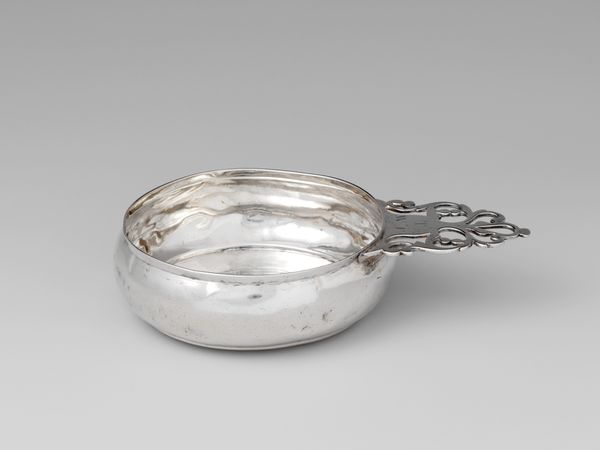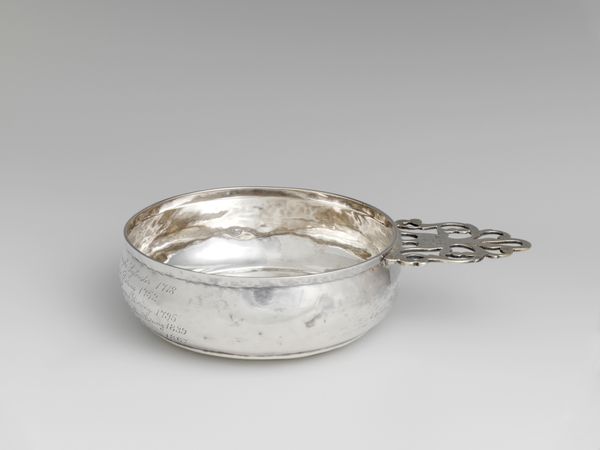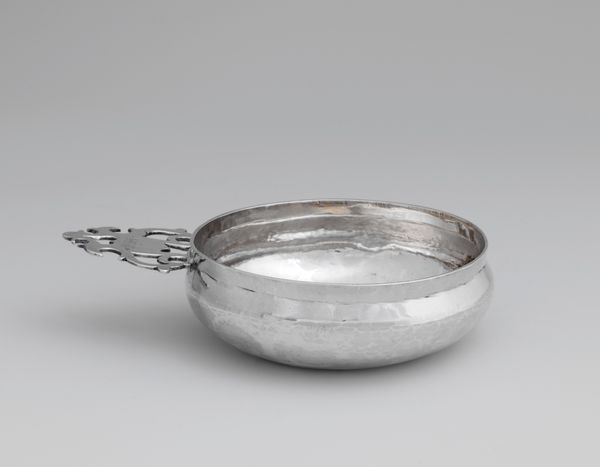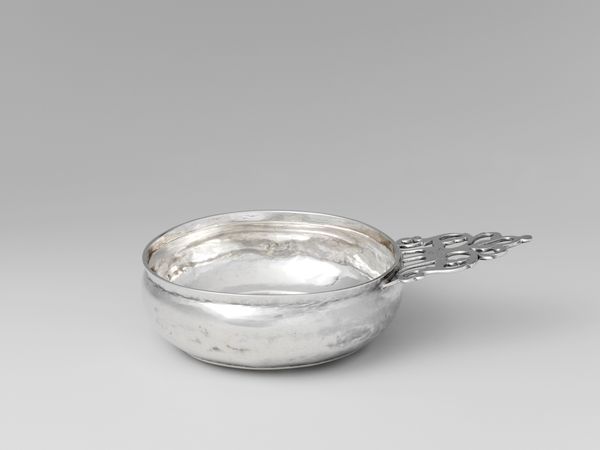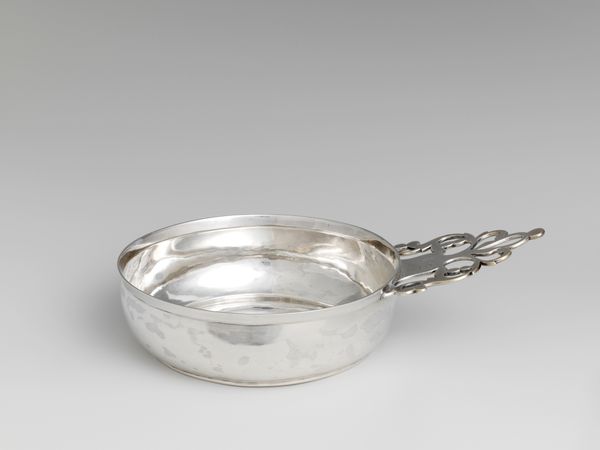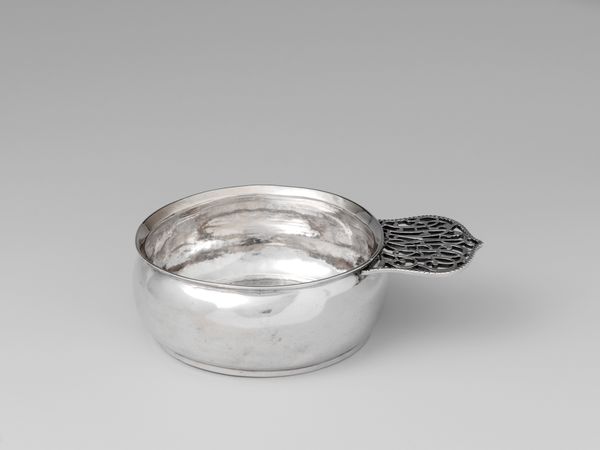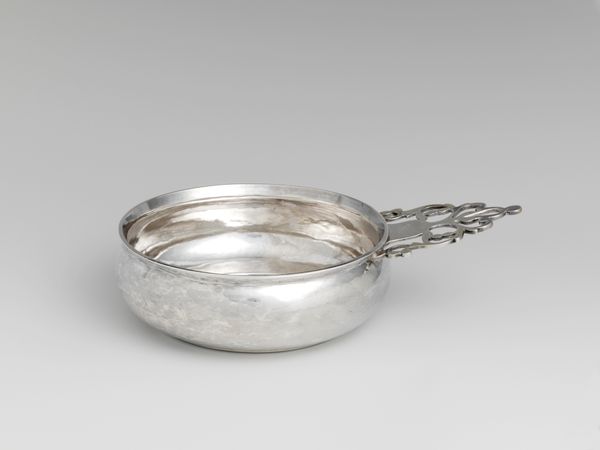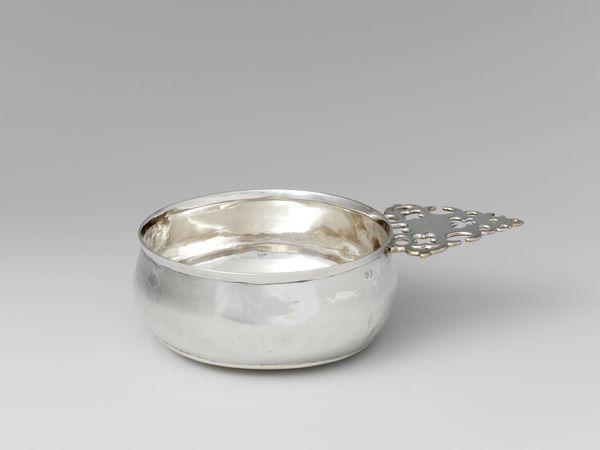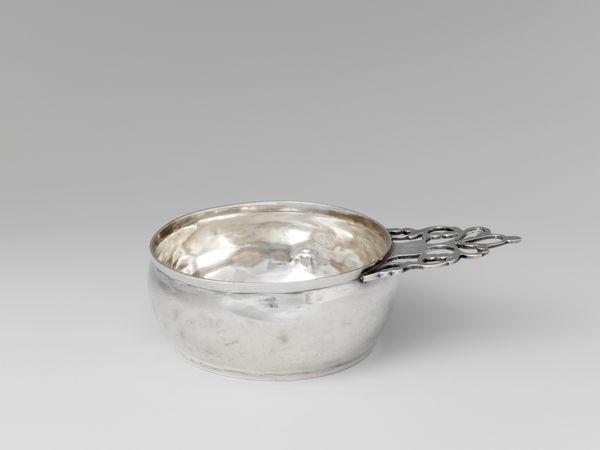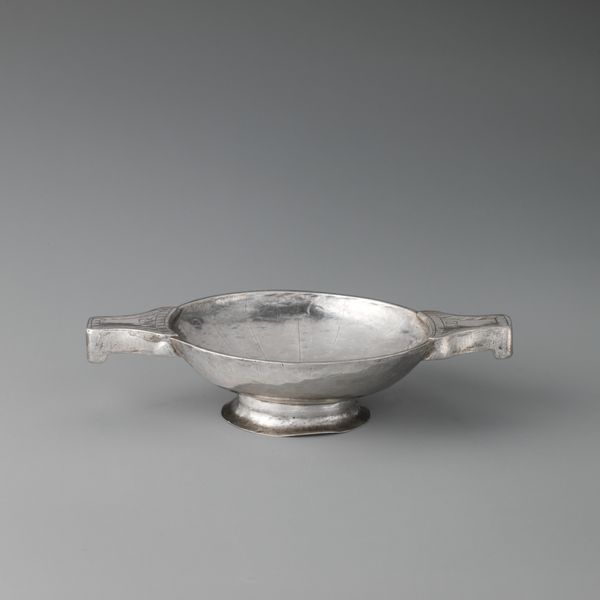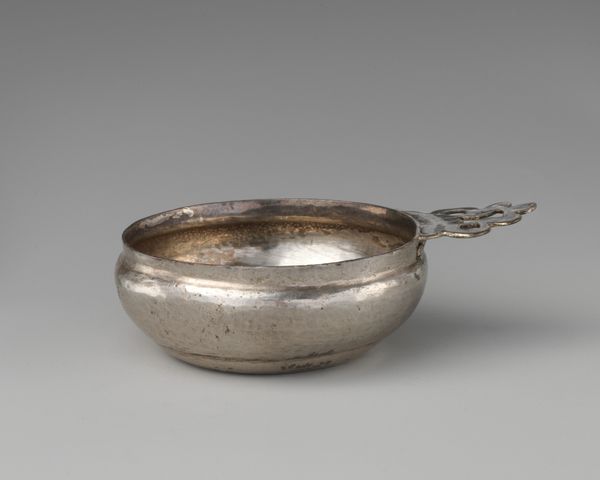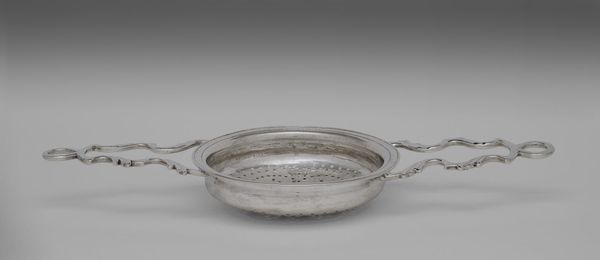
silver, metal
#
silver
#
baroque
#
metal
#
decorative-art
Dimensions: Overall: 1 13/16 x 7 5/8 in. (4.6 x 19.4 cm); 7 oz. 4 dwt. (224.1 g) Lip: Diam. 5 1/8 in. (13 cm) Body: Diam. 5 3/16 in. (13.2 cm)
Copyright: Public Domain
This is a silver porringer made by William Cowell Senior in Boston, Massachusetts, sometime in the early 18th century. In early America, the design and creation of silver objects like this one, were deeply embedded in a culture of status and aspiration. Silversmiths occupied an important place in society and the objects they produced signified wealth, taste and refinement. Note the intricate handle, which displays both the silversmith’s skill and the owner’s social standing. Consider how access to such items was far from universal. These kinds of objects reinforce a social hierarchy, where material possessions dictate status and power. Early American silver is not just about aesthetics; it embodies the complex interplay between art, commerce, and society. To understand this piece fully, we need to examine inventories, probate records, and other historical documents that shed light on the lives and values of those who commissioned and used such objects.
Comments
No comments
Be the first to comment and join the conversation on the ultimate creative platform.
